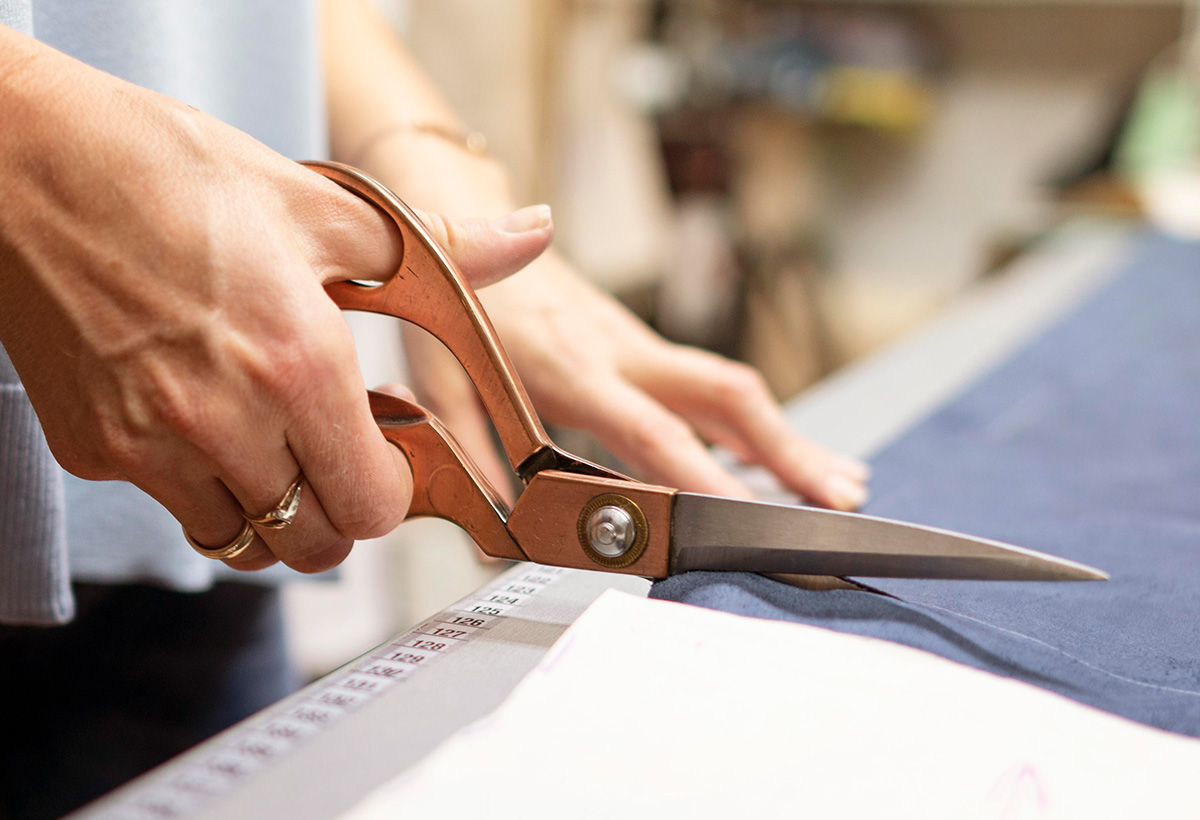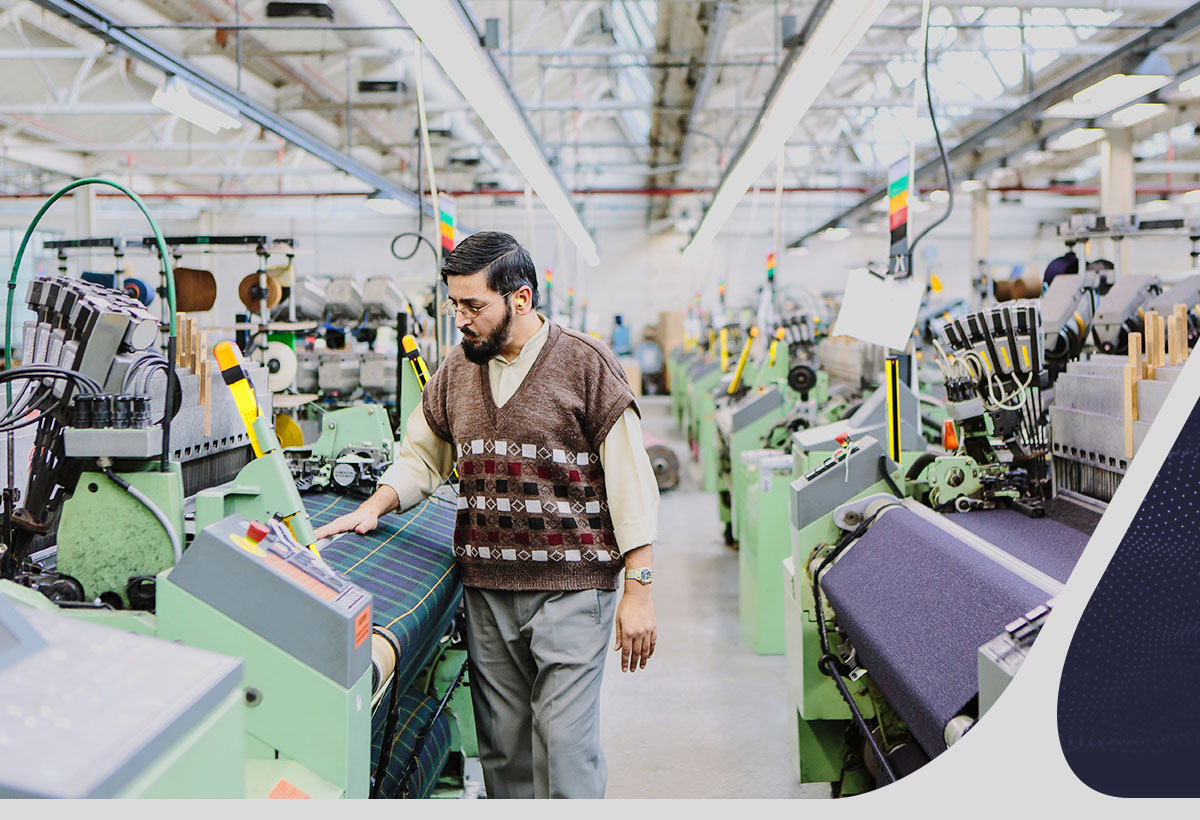The constant advancement of technology, and the growing demand for quality products, require ways to optimize textile production to increase productivity.
Therefore, we have put together a list of 6 strategies that will help you ensure a more efficient and competitive operation. Continue reading to check it out!
Let’s go?
What is textile production?
Textile production refers to the process of manufacturing fabrics and products derived from natural fibers (such as cotton, wool, silk, linen) or synthetic fibers (such as polyester, nylon, acrylic). This process involves several steps, from obtaining raw materials to fabric production and making
of finished products. Such as, for example, clothes, curtains, sheets, among others.
According to an article by UNICAMP, textile production can be divided into:
- Spinning: production of yarns or filaments that will be prepared for the weaving stage;
- Weaving: manufacture of flat fabrics or knitted fabrics (knitwear) and non-woven technology;
- Finishing/improvement: operations that give the product comfort, durability and specific properties;
- Manufacturing: drawing, making molds, grating, fitting, cutting and sewing.
The final product of each phase of the textile process becomes the raw material for the subsequent stage, highlighting the diverse nature of the textile chain. After all, the textile industry in Brazil is one of the few developing countries that have all stages of textile production well developed.
However, they can be fragmented into different industries, which makes this process even more complex.
Each sector is made up of a variety of distinct segments, with their own dynamics, structures and specific players.
6 strategies to achieve greater productivity in the textile production line

The diverse structure of textile production makes optimization essential, as it minimizes the impacts caused by failures and interruptions in any of the stages. Optimization guarantees greater efficiency and continuity throughout the production chain by:
- Reduce waste and consumption of resources such as energy, water and raw materials;
- Improve workflow and maximize the use of machines and labor;
- Ensure uniformity and precision in final products, reducing rework;
- Align with demands for sustainable processes;
- Make the company more agile and able to respond quickly to market trends.
These factors directly contribute to the growth and success of the industry. With this in mind, we have put together 6 strategies that will help you achieve greater productivity in the textile production line.
See the complete list below!
1. Process automation and standardization
Automation and standardization of textile production processes are essential practices for increasing performance. Bem como redução de erros humanos e de tempo de produção.
That is, automation allows repetitive tasks to be performed with greater speed and precision. This reduces the need for labor, as well as operational costs.
The standardization, in turn, allows all processes and activities to follow the same quality criteria. Therefore, it speeds up the other steps, generating greater predictability and consistency of the final products.
2. Data analysis
Data analysis ensures that textile production is not operated and managed by guesswork, but by reality. By constantly monitoring key operational indicators, it is possible to obtain valuable insights. In other words, analyzing production data in real time helps identify bottlenecks and predict failures, implementing continuous improvements before they become major losses for the industry.
After all, evaluating working time efficiency, productivity per employee and yield per machine allows for strategic adjustments.
Furthermore, it also contributes to building a greater capacity to adapt to market changes, increasing competitiveness and profitability in the textile sector.
3. Industrial maintenance
Another way to ensure the productivity of textile production is through industrial maintenance. Essa prática é fundamental para assegurar a continuidade das suas operações por meio da equipment availability. In other words, it is what ensures that the machines operate efficiently, avoiding unexpected stops, which interrupt the production flow and impact final deadlines. Not to mention that quality textile machines also eliminate the risk of defects in parts.
At the same time, it helps eliminate employee safety hazards. Well-maintained equipment prevents accidents caused by mechanical failures.
And all of this helps to optimize costs with emergency repairs or replacing entire machines.
For this, it is also essential to monitor the OEE (Overall Equipment Effectiveness). Esse indicador ajuda a identificar perdas e oportunidades de melhoria relacionadas à disponibilidade, desempenho e qualidade das máquinas.
4. Factory layout optimization
The factory layout directly influences the performance of textile production. Ela determina o workflow and operational security.
Without a well-planned and optimized layout, there is no way to reduce unnecessary travel.
The circulation of materials and equipment needs to be structured in a way that minimizes idle time and speeds up the entire production process.
And since, in some textile industries, production integrates all stages, an intelligent layout helps with coordination between them, reducing the risk of errors, rework and failures in quality control.
Furthermore, a good layout helps to make better use of physical space, allowing the addition of more machines. Which also helps to increase the productive capacity and adding new technologies and processes.
5. Qualification and training
With constant technological evolution and the introduction of new machines and automated processes, team training is essential to make the most of these resources. Training needs to be constant so that professionals are always up to date, operating equipment in an intelligent, safe and optimized way. This results in greater productivity, lower error rates and higher quality of the final textile product.
Furthermore, training increases satisfaction and talent retention, developing a more qualified and motivated work environment.
6. Investment in machines aligned with the Industry 4.0 concept
And investment in machines aligned with the concept of industry 4.0 helps with the application of most of the strategies mentioned above, such as automation, standardization and data analysis of textile production. This type of equipment brings significant benefits, such as increased efficiency and precision, reduced operating costs and greater control over the quality of the final product. All this with the possibility of mass customization
. A indústria 4.0 permite que indústrias têxteis ajustem suas linhas para atender as demandas específicas dos consumidores, sem abalar a eficiência.
At the same time, they contribute to sustainability, as textile 4.0 machines make efficient use of resources such as water, energy and raw materials. It is no coincidence that investment in Industry 4.0 is a competitive differentiator in a market with more than 24,300 formal production units across the country, according to Abit.
Read also: Clothing in Industry 4.0: What is the real productive gain?
Understand how to optimize textile production through technology
As we have seen, textile production must be constantly optimized in search of reducing its complexity.
Only in this way will it be possible to increase productivity, guarantee quality, sustainability and end customer satisfaction.
It’s that simple! The greater the flexibility of your line, the greater the adaptation to market changes, promoting prominence in a competitive scenario. And the technology
plays a fundamental role in this context, as discussed above. So, to delve even deeper into this topic, click the button below and download our free E-book.





